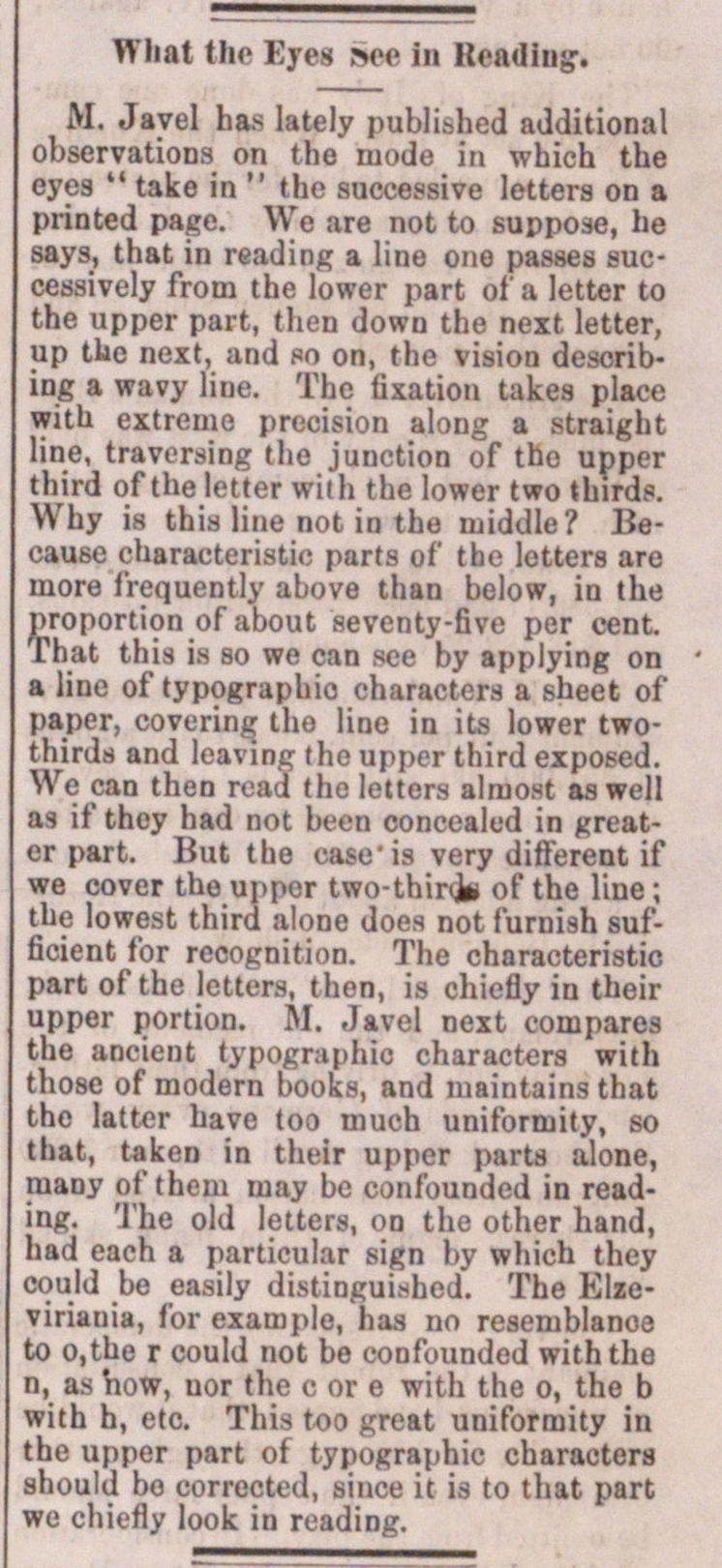What The Eyes See In Reading

OL Jayel has lately published additional observations on the mode in which the eyes " take in " the successive letters on a printed page. We are not to suppose, he says, that in reading a line one passes successively from the lower part of a letter to the upper part, tlien down the next letter, up tbc next, and po on, the visión desoribing a wavy line. The fixation takes place wita extreme precisión along a straight line, travcrsing the junction of the upper third of the letter with the lower two thirds. Why is this line not in the middle? Because characteristio parts of' the letters are more frequently above than below, in the proportion of about seventy-five per cent. That this is so we can see by applying on ' a line of typographio characters a sheet of paper, covering the line in its lower twothirds and leaving tlio upper third exposed. We can then read the letters alrnost as well as if thcy had not been concealed in greater part. But the case1 is very different if we cover the upper two-third of the line ; the lowest third alone does not furnish sufficient for recognition. The characteristic part of the letters, then, is chiefly in their upper portion. M. Javel next compares the ancient typographio characters with those of modern books, and maintains that the latter have too much uniformity, so that, taken in their upper parts alone, many of them may be confounded in reading. The old letters, on the other hand, had each a particular sign by which they could be easily distinguishod. The Elzeviriauia, for example, has no resemblanoe to o,the r could not be eonfounded with the n, as how, uor the c or e with the o, the b with h, etc. This too great uniformity in the upper part of typographic characters should bo corrected, since it is to that part we chiefly look in reading.
Article
Subjects
Human Interest
Typography
Reading
Old News
Ann Arbor Courier
M. Javel